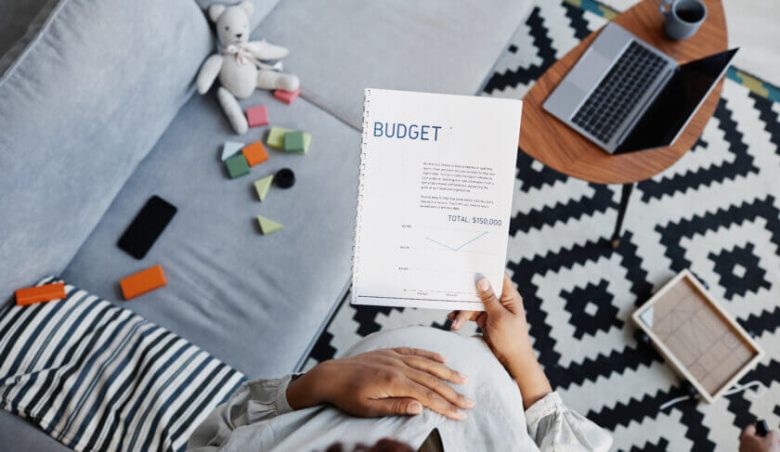No matter which budget method you decide on—an app, budget software, or even pen and paper—it is crucial that the one chosen fits perfectly for you and your individual financial circumstances. When selecting your ideal method of budgeting, consider both current spending habits as well as any needs or wants that arise when making this choice. Proportional budgets are easy, prioritize savings, and can easily be combined with other strategies like the pay yourself first budget. Plus, this money management style requires less planning upfront.
Zero-Based Budgeting
Zero-based budgeting differs from popular personal finance methods that encourage spending 50% on needs, 30% on wants, and 20% towards savings goals by allocating every dollar of your take-home pay to specific tasks and goals that aim for expenses, spending, and savings equaling out over time.
Step one in this method involves reviewing receipts, credit card statements, and bank accounts from recent months to get an overview of your current spending habits. Next, set goals and allocate how much will go towards each expense category each month based on these goals; set aside extra funds each month towards savings or debt payoff or unexpected costs.
The primary challenge associated with this budgeting approach is its heavy time commitment and cultural shift requirements; furthermore, it may create short-term focus risk if your team focuses solely on trimming expenses instead of looking ahead to revenue growth opportunities that will pave the way for long-term success. But when done successfully, this method eliminates inefficiency by aligning expenses squarely with top priorities; an excellent option to consider for growing companies looking for increased transparency into expenses and spending while eliminating wasteful practices that might inhibit long-term business expansion.
Pay Yourself First
The Pay Yourself First Budget Method can be especially helpful to beginners as it encourages saving habits. Under this system, a fixed percentage of each paycheck goes straight into savings accounts or other investment vehicles—meaning this money won’t be available for spending and can help you reach long-term saving goals more effortlessly.
Implement this strategy by setting up automatic payments through your bank to transfer a set percentage of each paycheck into savings accounts or investments automatically each month. Not only will this remove the need to save, but it will help build discipline by treating saving as an essential financial responsibility.
Paying yourself first is an effective approach for beginners; however, for people carrying heavy debt or having irregular income, it may not be practical. In such instances, more comprehensive budgeting systems that allocate money towards multiple expenses at once may be more suitable.
Apart from emergencies and retirement savings goals, you should also set aside funds for planned larger purchases like a car or vacation. If your savings goals seem unattainable, look for ways to scale back expenses elsewhere or explore additional income sources such as side gigs.
Envelope Budgeting
This time-honored method uses physical cash (or its digital equivalent) in envelopes (or digital forms) to plan spending more easily and intuitively. This practice helps build better financial habits by assigning each dollar its purpose before spending. Furthermore, its visibility makes spending easier to monitor.
Begin by writing down all your major spending categories on paper, such as groceries, entertainment, gas, and personal care expenses. Also include categories for debt repayment, savings goals, or any other important aspects. Next, assign spending limits per category and fill your envelopes with enough cash to cover those expenses until one of them runs dry—then start all over again next month!
One key benefit of this method is forcing you to pay with cash rather than credit cards, which can help limit overspending by keeping spending within your means and in your wallet. In fact, researchers at the University of Utah, Professor Promothesh Chatterjee and Randall L. Rose, found that people willing to spend twice as much on products when paying with credit are twice as likely as those using cash payments alone.
Envelope budgeting may only work well if you are the sole person making purchases; otherwise, it becomes cumbersome and harder to manage if others share shopping or bill-paying duties with you. Furthermore, physical cash increases your risk of theft.
Priorities Budgeting
Starting your budgeting journey right is easier when you establish financial goals. From saving for vacation to paying off debt, establishing financial goals will keep you on the right path and motivated to do it! While budgeting apps that link directly to bank accounts simplify the process of tracking expenses, spreadsheets or worksheets can also serve the same purpose.
Step One—Develop an In-Depth Understanding of Revenues
Before undertaking priority-driven budgeting, it’s crucial that a solid understanding of revenues exists. This should involve studying trends within major revenue sources, reserves, and long-term forecasts in your city or county to help ensure a financially sound budget that’s sustainable in the long run.
Step Two—Establish and Clarify Vision/Results
A key aspect of using priority-driven budgeting is clearly outlining what the organization needs to accomplish, in line with other initiatives (such as its strategic plan), which have laid out their goals.
Priority-driven budgeting requires local government leaders to understand its philosophy. This will help build support among community members for its implementation, as well as question spending decisions that don’t align with community priorities and eliminate those that do. Furthermore, transparency must be ensured by providing residents with data-driven evaluations of programs as well as comparisons with similar service providers.




